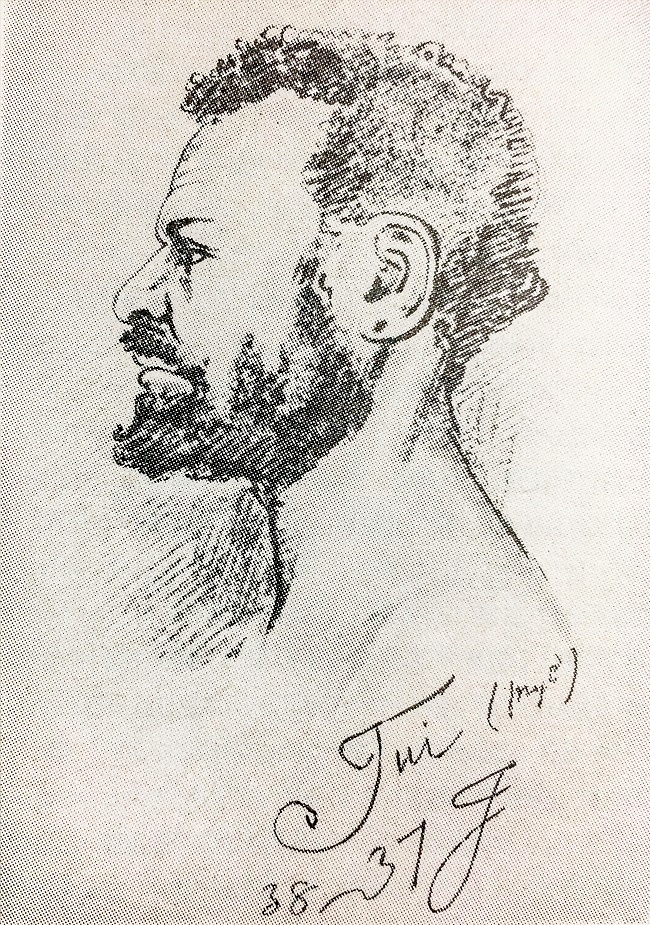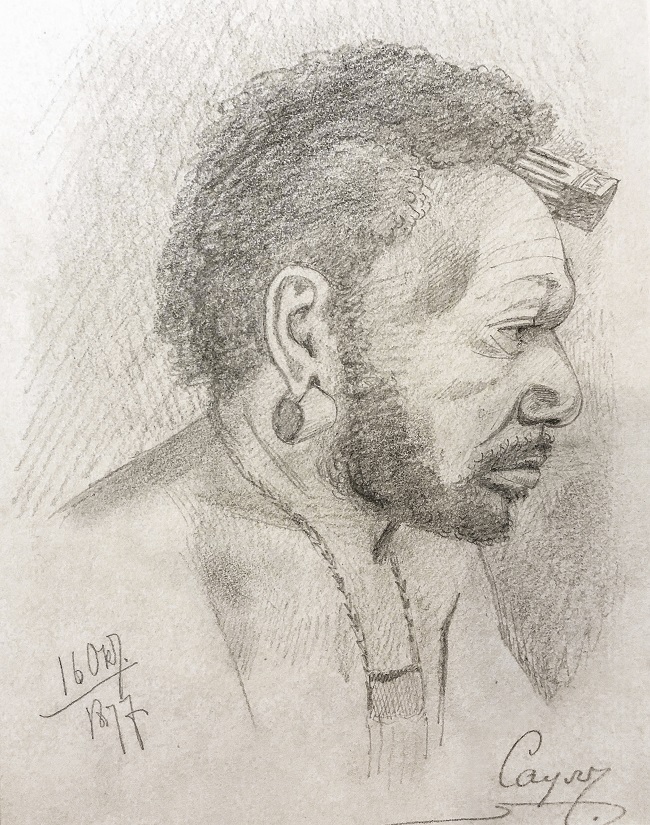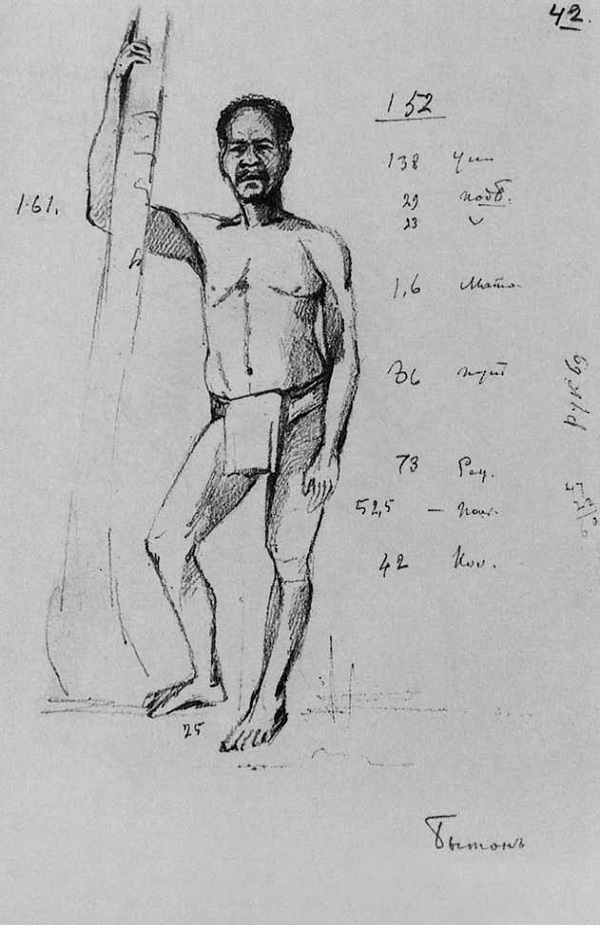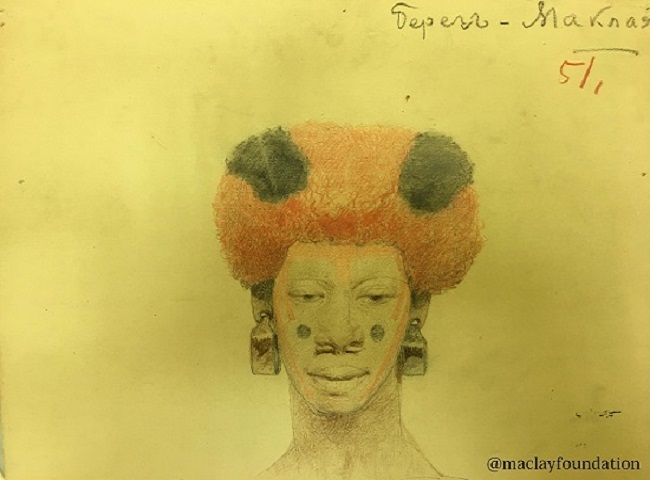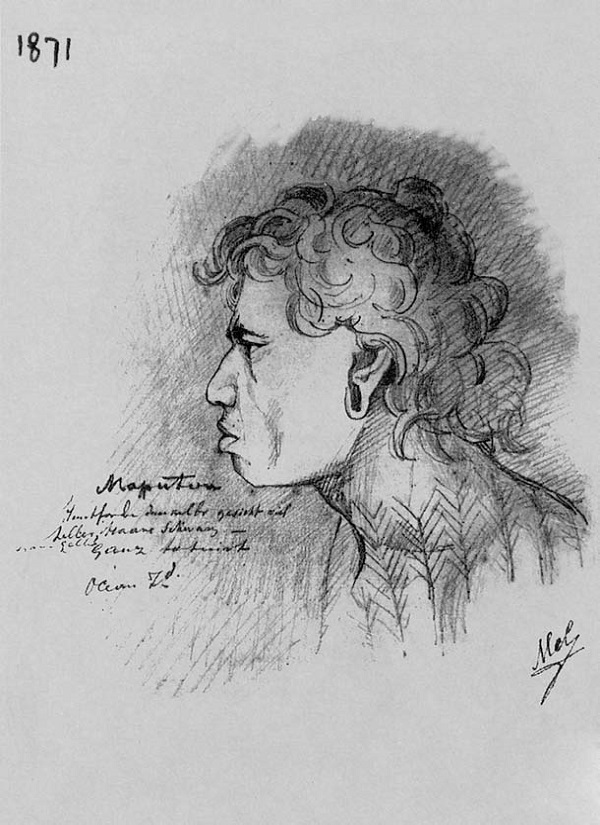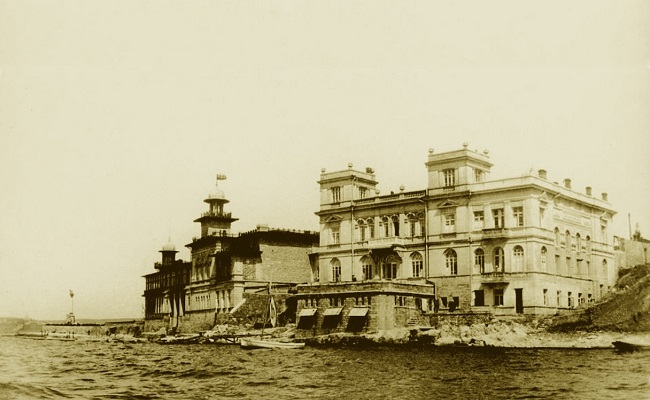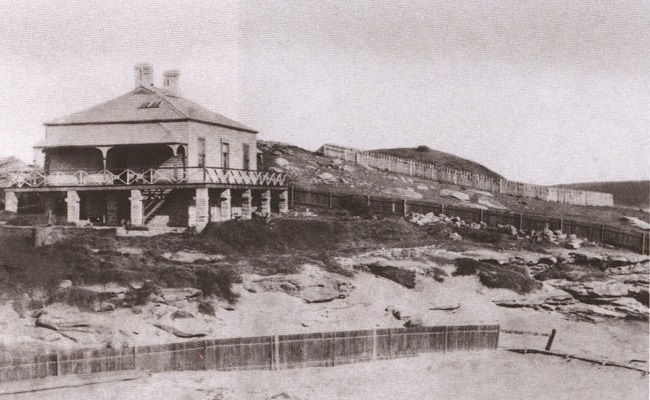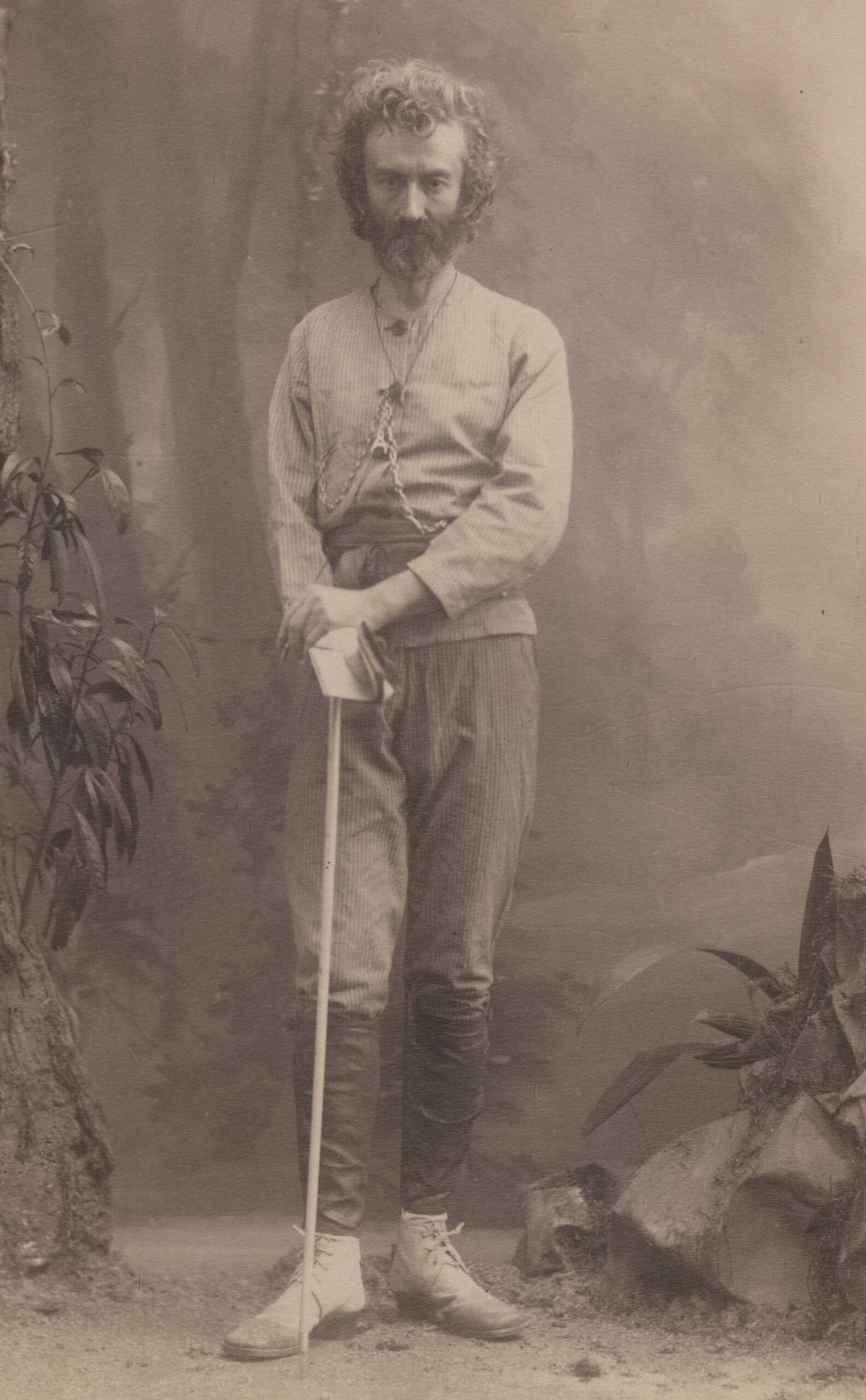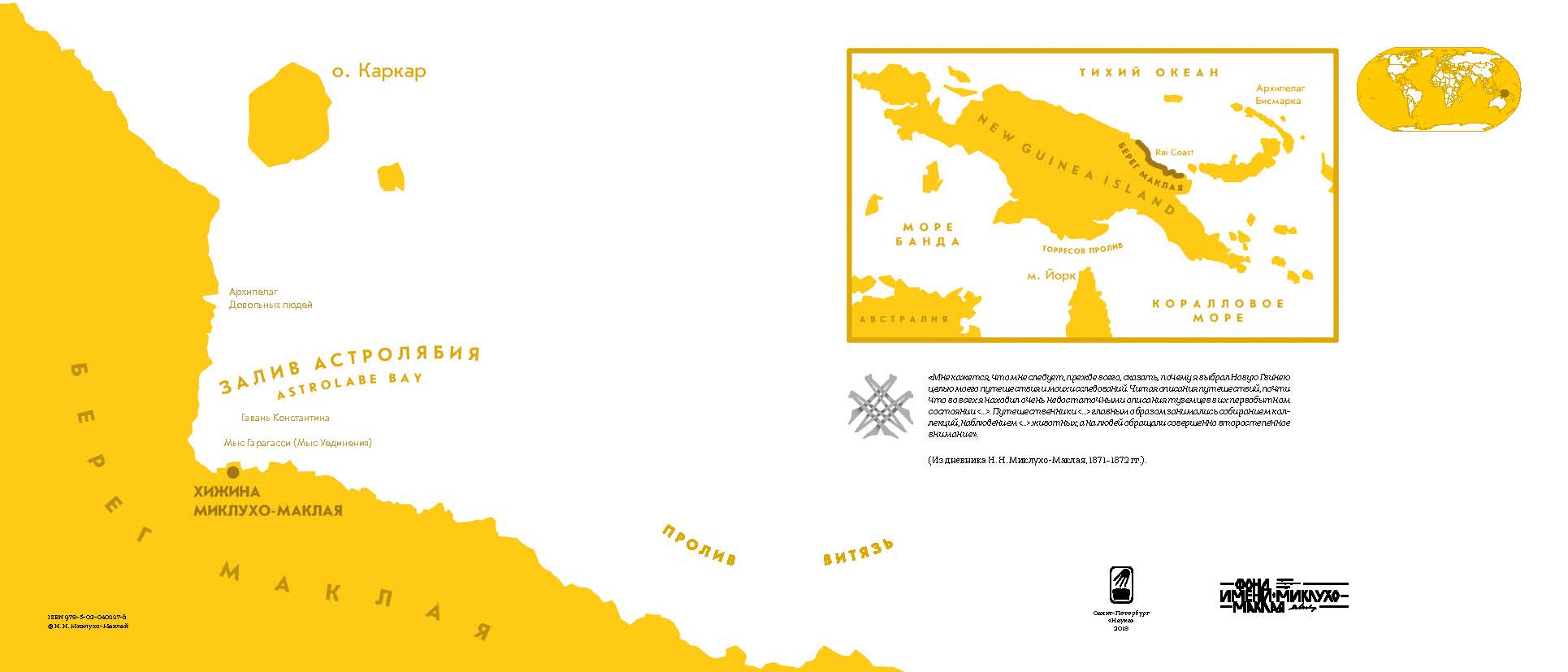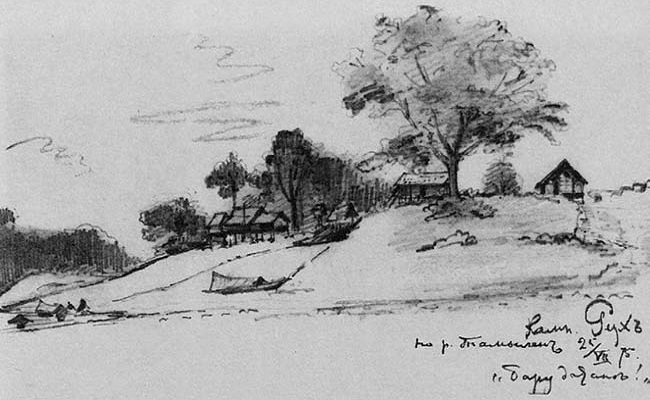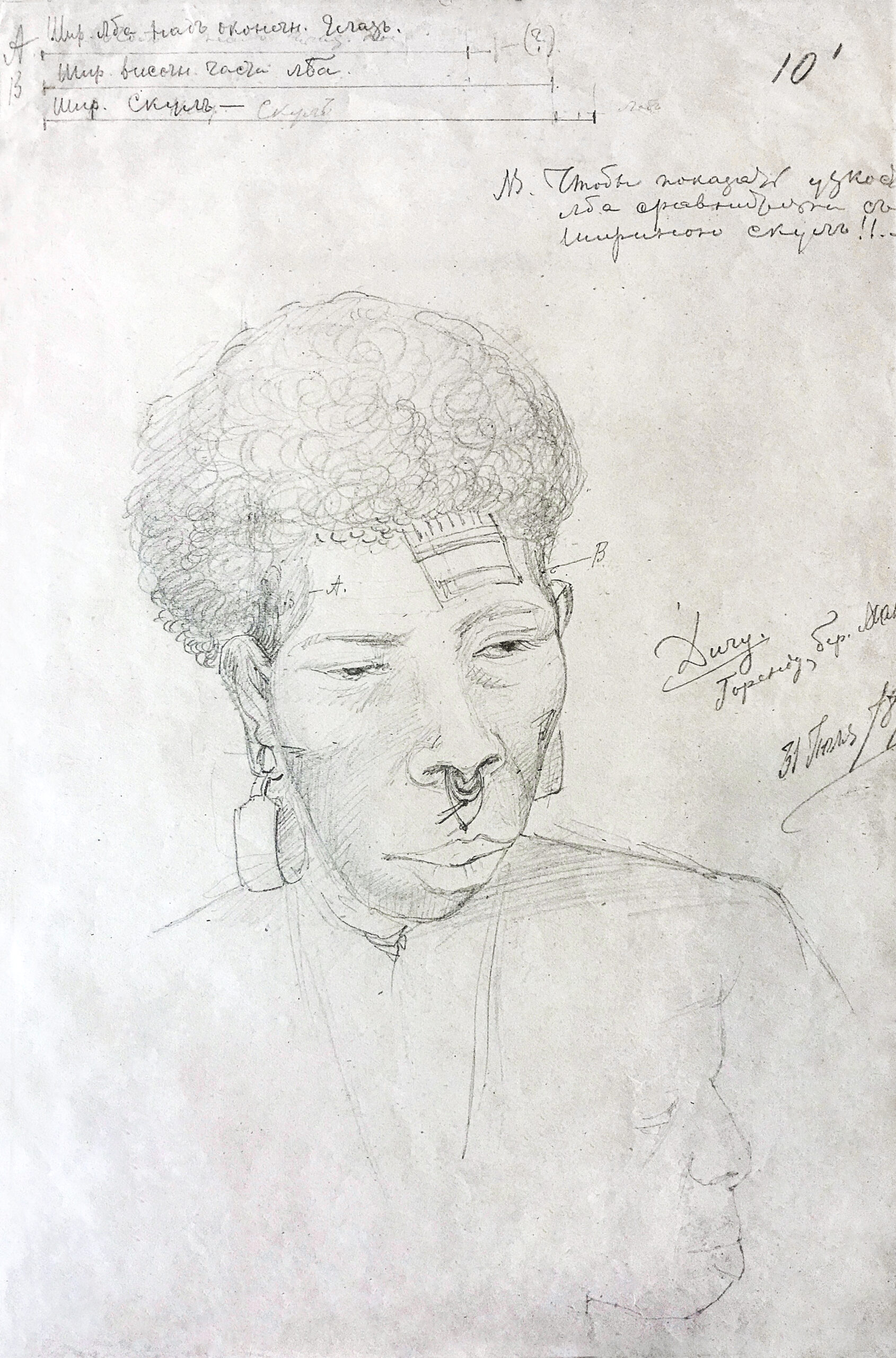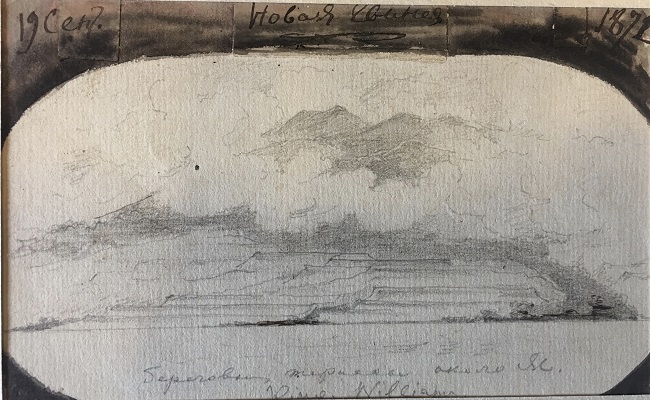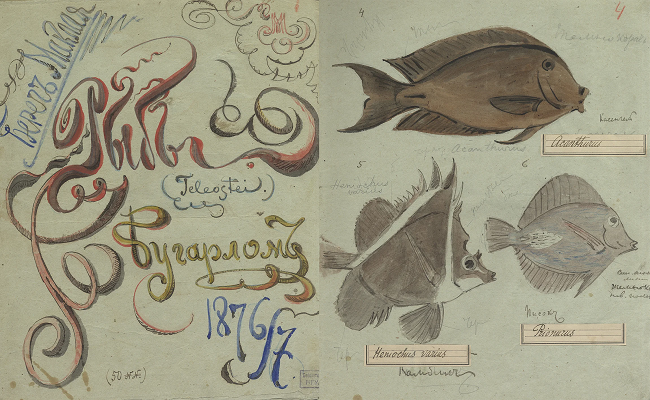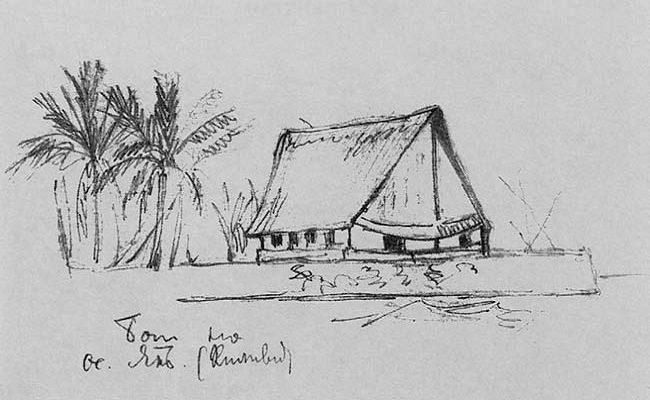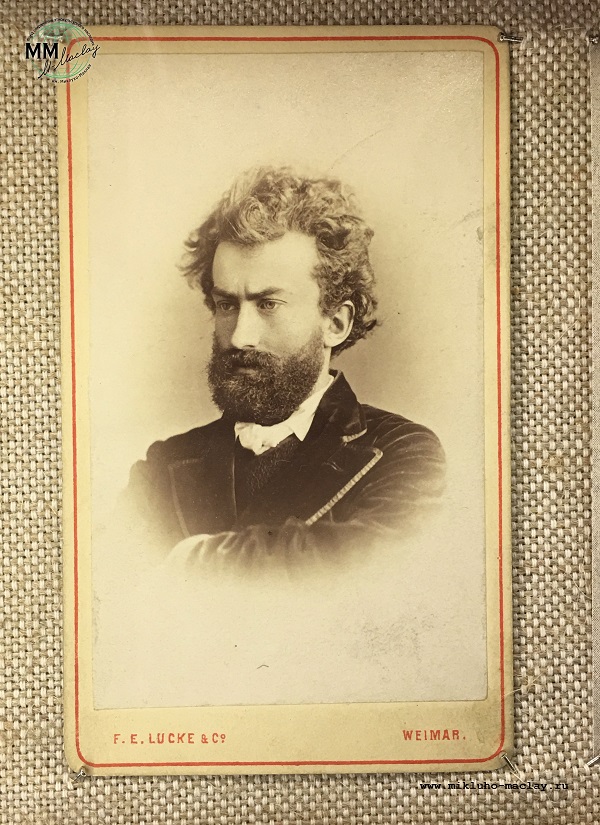
N.N. Miklouho-Maclay went down in the world and Russian history as an outstanding humanist scientist, traveler and public figure, who always followed the humanistic principles of respect for cultures and traditions of the peoples of the world, and fought for the rights of indigenious people of the South Pacific. With an extraordinary talent and passion for scientific knowledge Miklouho-Maclay conducted ethnographic and anthropological research for more than 15 years in Southeast Asia, as well as in all cultural areas of Oceania: Melanesia, Polynesia and Micronesia.
The future world-famous explorer and traveler was born in 1846 in the village of Yazykovo-Rozhdestvenskoe, Novgorod Governorate. As a student, he was looking for his vocation: he studied in St. Petersburg and Germany at various faculties. Later, N.N. Miklukho-Maklay’s choice fell on the medical faculty of the University of Jena, as the scientist understood that for further research, he needed knowledge in several fields of science. The Russian scientist can rightly be called a naturalist with encyclopedic knowledge.
Considering physical anthropology and ethnology, it can be fairly argued that it was N.N. Miklouho-Maclay who “discovered” the indigenious people (Papuans) of the Maclay Coast (the northeastern part of New Guinea) to the outside world, having conducted a thorough study of their anthropological type, material culture, household and social life. He showed the inconsistency of the racist views of some anthropologists about the “tuft-like” hair and the “roughness” of the Papuan skin. In his works, he makes clear conclusions on this subject: “The hair on the head of a Papuan grows exactly the same as that of a European and in general, as on a human body… Like on the head, the hair on the body of Papuans does not grow in groups or tufts, as some observers claim.” I can not agree with the authors who attribute some particularly rough skin to the Papuans. Not only the children’s and women’s, but also men’s skin is smooth and does not differ in this respect from the skin of Europeans. The fact that many of them here suffer from psoriasis and consequently the skin becomes scaling does not yet represent a racial peculiarity; it is also clear that if many others are dealing with a special sort of clay for many years, it is not surprising that their skin becomes somewhat rougher. Finally, it is also clear that the skin of people who constantly walk naked and expose themselves to the sun and all the changes of the weather, can not be as soft as the skin of people who cover themselves with clothes. In short, no special roughness of the skin can be considered as one of the features that distinguish Papuans from other people.”
During his short stay in Western Micronesia on the islands of Palau and Yap Nikolay Nikolaevich made valuable notes about several interesting customs of local residents (for example, the custom of artificial compression of a newborn baby’s nose on Yap islands) and about certain aspects of their religious beliefs and mythology. His descriptions of the anthropological features of the islanders are of considerable importance. So, on the islands of Palau, he discovered in local residents some features characteristic to the Papuan race (i.efeatures of the Australoid race), but according to his description, they were represented on Yap Islands, which is completely consistent with later anthropological and genetic studies of this region.
At his visit to Northwestern Melanesia (the Admiralty Islands, the Western Islands), Maclay also collected important ethnographic and anthropological material. His research on the Hermit Islands (a group of islands within the Western Islands), where he spent only three days, is particularly interesting. In such a short period of time he collected a lot of information, both on the traditional culture and on the physical appearance of the indigenous people of this little-known group of islands.
During the second expedition to the Malay Peninsula (1875), Nikolay Nikolaevich discovered the Senoi tribes Semelai and Temok, as well as the small Semang tribe Batak De, representing themselves as nomadic hunters and gatherers. Despite N.N. Miklouho-Maclay’s fragmentary notes on these tribes, they are a unique ethnographic source. In addition, N.N. Miklouho-Maclay can be considered the first ethnographer who conducted long-term stationary field research in the tropical zone.
Miklouho-Maclay became interested in oceanology in his student years, during his trip to the Canary Islands in 1866 together with an outstanding scientist and founder of the term “ecology” E. Haeckel (1834-1919). Even then, Miklouho-Maclay realized that it was impossible to study marine organisms without simultaneously studying the marine environment in which these organisms dwelt.
At the beginning of his independent scientific activity, in 1869, Miklouho-Maclay went to the Red Sea to study sponges. While studying he noted huge differences in the bottom fauna of the Red and the Mediterranean Seas, as well as the Indian Ocean. Miklouho-Maclay explained this phenomenon by the increased temperature of the surface and bottom waters of the Red Sea. Indeed, the temperature of the bottom water of the Red Sea (at depth of about 2604 m) is approximately 21.5°C, while at the same depth in the Mediterranean Sea the temperature is 13-14°C, and in the adjacent areas of the Indian Ocean – only 3°C. As an outstanding Russian naval officer and scientist N.N. Zubov noted, Miklouho-Maclay’s conclusion in his scientific works is now generally recognized in marine biology and, in particular, in commercial oceanology. His conclusion goes “only with the accurate measurement of water temperatures and their fluctuations, its density and type, and studying of the Ocean current and the neighboring organisms and, in general, all the various geographical and physiological conditions of the area, it would be possible to explain why and how this or that form developed”
The program of the proposed research during the trip to the islands and coasts of the Pacific, which N.N. Miklouho-Maclay presented to the Imperial Russian Geographical Society in 1870, included a number of hydrological studies: the study of water temperature at different depths, near the coast and in remote areas, the study of the Ocean current and coastal resources, and others.
N.N. Miklouho-Maclay went on his first trip to the island of New Guinea (1870-1872) on the corvette “Vityaz” under the command of Pavel Nikolaevich Nazimov. “Vityaz” set off from Kronstadt in October 1870. Upon arrival in English Portsmouth, the Admiralty provided Miklouho-Maclay with six sounding leads with the 5mm lead line of 1000 fathoms (1830 m) length and two Miller-Casella thermometers ordered in advance.
In February 1871, on the “Vityaz”’s route from Africa to South America during a calm, Miklouho-Maclay became the first scientist in the world to measure the temperature of the Atlantic Ocean at a depth of 1830 meters. The temperature was 3.5°C, while on the surface it was 27.6°C. Based on the measurements of the depth temperature, N.N. Miklouho-Maclay suggested that the water in the depths of the Ocean is in constant motion and there were circulations of equatorial and polar waters. It is also possible that it was Miklouho-Maclay who first introduced the term “climate of the Ocean”, which is widely used today, in his diary records.
To verify the hypothesis of the outstanding geographer and naturalist Alexander von Humboldt (1769-1859) that the temperature of the surface waters of the Ocean decreases as it approaches the shores, N.N. Miklouho-Maclay measured the surface temperatures of the Ocean when approaching the shores of Chile (Concepcion Bay, Valparaiso), the Easter Islands, Mangareva, Tahiti, Samoa (Upolu Island), Fiji (Rotuma Island) and New Ireland (now a part of Papua New Guinea).
As for the biological sciences, the views and formulations of the young student Miklouho-Maclay on the nature of sponges were much closer to modern scientific views than the views of his teacher Ernst Haeckel. Maclay, based on the studies of the sponges of the northern and eastern seas, and the Red Sea, described the particular richness of the Red Sea with calcareous sponges, and the northern seas – with Demosponges. Later studies have fully confirmed that Nikolay Nikolaevich was right: the cold seas of the northern and southern hemispheres are especially characterized by Demosponges with four siliceous spicules from the Polymastiidae family.
While preparing an echidna for anatomization, N.N. Miklouho-Maclay decided to measure the temperature of its body. It turned out that the body temperature of the echidna was 10 degrees lower than the temperature of placental mammals. After measuring the temperature of a platypus, Maclay got quite similar results. Subsequent studies conducted by R. Zemon and Mr. Sutherland, not only confirmed Maclay’s data, but also found significant fluctuations (according to Zemon, by 7-8 degrees) in the body temperature of cloacal animals, depending on changes in external temperature, therefore, they did not exhibit homeothermy. Thus, Maclay was the first to discover this biological feature of cloacal animals. As a biologist, Nikolay Miklouho-Maclay adhered to evolutionism, although he did not flaunt it and tried to avoid arguing about theories. But the evolutionary point of view, the belief in the unlimited ability of organisms, especially of the lower ones, to change under the influence of external conditions, is visible in all scientist’s works, starting from his early studies of sponges and ending with the studies of heterodont sharks. Like most of his contemporaries, Maclay supported the hypothesis of inheritance of acquired features.
In addition, Miklouho-Maclay dreamt about biological stations built across the entire world. According to his concept, the stations would become temporary residences for scientists, where they could make experiments, collect data, conduct research, and then move to the next stations. Miklouho-Maclay presented the idea in 1869 at The II Congress of Russian Naturalists and Doctors in Moscow. His colleagues supported the idea and the Congress decided to establish the first station at the coast of Crimea in Sevastopol. In 1871, Sevastopol biological station was opened, it was the first station in Russia and Europe, and the third in the world. Nowadays it has transformed into an important scientific institution, A. O. Kovalevsky Institute of Biology of the Southern Seas of the Russian Academy of Sciences.
In 1881, Nikolay Miklouho-Maclay established the first biological station in the southern hemisphere, in Australia. He spent 7 years in total on the fifth, and visited Sydney for the first time in July 1878. His poor health condition did not allow him to continue his traveling across New Guinea and tropical regions of the Earth, he needed to move temporarily to a country with a milder climate. Moreover, considering Sydney’s location and other reasons the Russian scientist supposed it would be an appropriate place for a biological station. According to the diary records “It was a small cottage, constituted by four cabinets, where naturalists of different nations could work without distracting each other.” In 1883, N.N. Miklouho-Maclay came back from Russia and worked at the biological station in Watsons Bay for two years, studying coastal waters of Australia. The Russian scientist saw this station as “an example of an international scientific institution, which would have great importance for biological sciences and their development”.
N.N. Miklouho-Maclay became a pioneer in a number of Earth sciences. During the expeditions to the northeastern coast of New Guinea, in addition to his ethnographic and biological studies, N.N. Miklouho-Maclay conducted meteorological observations three times a day, measured the temperature of the surface water, as well as observed the sea level. These were the first accurate hydrometeorological observations in the South Pacific.
For the first time, Nikolay Nikolaevich made descriptions of the marine terraces on the northeastern coast of New Guinea and identified the causes of their formation, thereby making a significant contribution to the study of the geomorphology and tectonics of this region. In the 1970s, 14 marine coral terraces, most clearly traced between the village of Gitua and the Massaveg River, to the South-East of the Maclay Coast, were discovered during the detailed geomorphological studies conducted under the leadership of an Australian scientist Mr. Shepel. Soviet scientists, who visited the Maclay Coast in 1971 on the research vessel “Dmitry Mendeleev”, identified that the coastal line near the village of Bongu was formed by six terraces.
Not being a specialist in atmospheric physics, Miklouho-Maclay described accurately the process of cloud accumulation at mountain tops: “At first, during the daytime the wind drives the moist layers of air to the mountains, where they go up, get cooler and form clouds that condense more and more as the new air arrives; secondly, since at night the air over the sea is warmer than over land, the wind blows from the sea, which gradually carries the clouds away from the mountains, which could be seen only at the morning”.
N.N. Miklouho-Maclay can be considered one of the pioneers of geothermal observations in Australia. He conducted them in the Magdala gold mine, located near the town of Stowel, about 200 km northwest of Melbourne. Shortly before him, similar observations, but in a less deep mine, were made by a geologist C.S. Wilkinson. However, he did not publish the results.
The Russian scientist also made some geographical discoveries in the North-East of New Guinea. In 1871, N.N. Miklouho-Maclay arrived on the corvette “Vityaz” at the coast of the northeastern part of New Guinea, where the officers of the Russian ship discovered and mapped Port Constantine (modern Melanua, 5°29′ S 145°51′ E), named after the President of the Imperial Russian Geographical Society, Grand Duke Konstantin Nikolayevich of Russia, Vityaz Island (modern Bil-Bil, 5°29′ S 145°78′ E), as well as the same name Vityaz Strait between Long Island and New Guinea (5°35’ S 147°0’ E).
As he was exploring New Guinea, N.N. Miklouho-Maclay mapped all the new Russian names: Cape Solitude (modern Garagassi Point, 5°28′ S 145°51′ E), where the Russian scientist’s hut was located, Mt. Gorchakov (5°36′ S 145°56′ E), Mt. Meshchersky (5°36′ S 145°43′ E), Mt. Peter the Great (5°47′ S 146°00′ E and 5°48′ S 146°03′ E), Mt. Grand Duke Konstantin (5°28′ S 145°38′ E), Mt. Grand Duchess Elena (5°34′ S 145°51 E), Behr Mountains (5°36′ S 145°43′ E). In August 1872, N.N. Miklouho-Maclay discovered an archipelago to the North of Astrolabe Bay and named it the Archipelago of Contented Men (5°12′ S 145°50′ E) because of the warm welcome by the islanders. When the first N. N. Miklouho-Maclay’s expedition to the island of New Guinea was coming to an end, the clipper “Izumrud” (after which Nikolay Nikolaevich named the strait (4°45′ S, 145°50′ E) between the Karkar Islands and New Guinea) came for the Russian scientist.
The Russian scientist called the vast territories in the North-East of New Guinea between Astrolabe Bay and the Huon Peninsula, about 300 km along the coast and 1.5 km deep, the Maclay Coast (modern Rai Coast, 4°50′-5°55′ S 145°50′-147°20′ E). “This is what I call the coast of New Guinea around Astrolabe Bay and the Archipelago of Contented Men by the right of the first European who settled there, explored the coast and got scientific results,” N.N. Miklouho-Maclay wrote in his diary. Later, the inhabitants of the northeastern coast of New Guinea named the island after N.N. Miklouho-Maclay (modern Urembo, 5°15′ S 145°47′ E).
The scientist’s drawings made during the expeditions are also a valuable ethnographic and anthropological source, because they were made “with the accuracy of proportions, precise details, and reflect both the anthropological type and individual features.” N.N. Miklouho-Maclay made more than 700 drawings.
Nikolay Miklouho-Maclay is the author of about 160 scientific works in ethnology, anthropology, meteorology and oceanology, etc., published in Russian, English, German and other European languages. Moreover, the results of his studies formed the basis of a number of publications around the world about the life of Miklouho-Maclay, including the Russian six-volume (in seven books) Collected Works, the most complete collection of the scientist’s works to date.
In 1886, after more than 20 years of expeditions to Southeast Asia and Oceania, N.N. Miklouho-Maclay returned to Russia, where he became a living legend, and brought his wife and sons to St. Petersburg. After a long illness caused by complications from malaria, dengue fever and rheumatism, N.N. Miklouho-Maclay died suddenly on 14 April 1888 at the age of 41.
In 1996, for his contribution to world and Russian science, as well as humanistic ideas that were long ahead of their time, UNESCO awarded N.N. Miklouho-Maclay with the title “Global Citizen” in honor of the 150th anniversary of his birth.
Of course, Nikolay Miklouho-Maclay is one of the most outstanding scientists and travelers of the second half of the XIX century, who made an invaluable contribution to world science, and whose humanistic ideas are still relevant today. In the time of aggravation of interethnic problems in almost all regions of the world, the progressive ideological heritage of Miklouho-Maclay on the equality of races and peoples, on the unacceptability of violent suppression of cultures, on the imposition of other people’s stereotypes, on the implementation of colonial or violent cultural expansion are of particular importance. Results of the scientific research and published books are a solid and scientifically impeccable tool, a basis for opposing reactionary power and nationalist tendencies, which will become a powerful weapon in fostering a sense of tolerance among the present generation.
In the XXI century, the ideas of N.N. Miklouho-Maclay came to life thanks to his descendant and full namesake. The legacy of N.N. Miklouho-Maclay is so great and diverse that it gives a reason and a basis for future research in various fields, and his public activity for the protection of Papuans (indigenious people) on the island of New Guinea has not yet been forgotten and helped to establish relations between the Russian Federation and the Independent State of Papua New Guinea at the present time. The project “Miklouho-Maclay. XXI century. Revived History”, which aims to perpetuate the memory of the great traveler and promote his humanistic ideas, gives an opportunity to broaden horizons, to learn something new and remember the past, to trace how relevant the earlier work is in comparison to the expeditions to the Maclay Coast (the northeastern coast of the New Guinea) of his descendant in 2017. The attitude that the Papuans (indigenious people) have preserved by passing on stories about Maclay is a good example of how one needs to live his life so that he will be remembered through the centuries.




